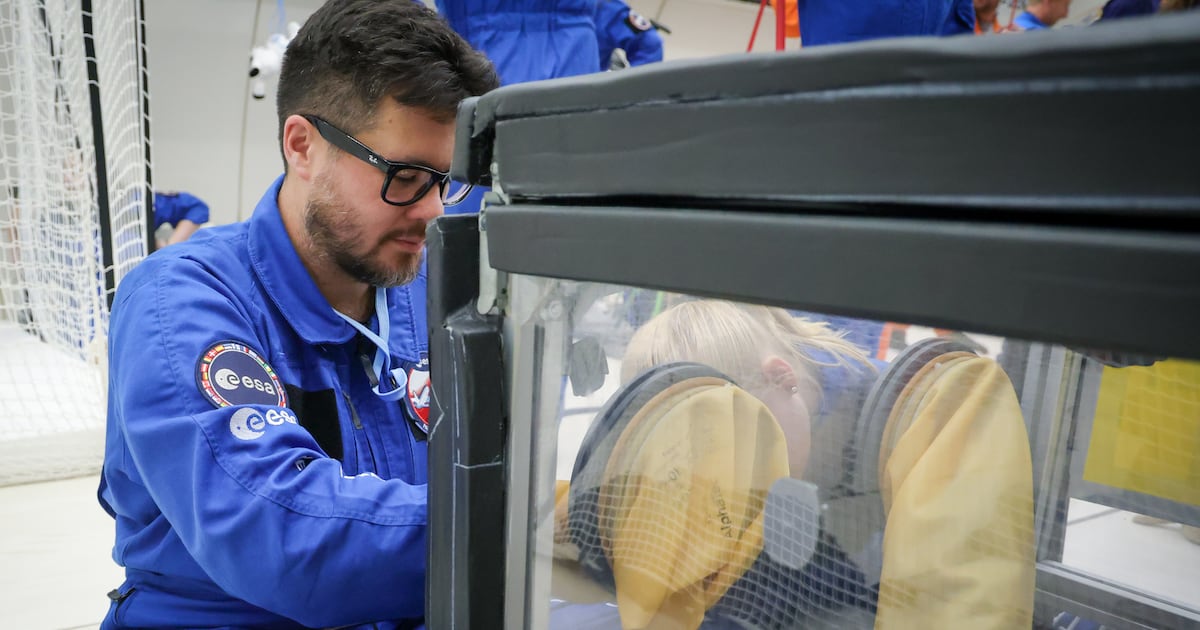Science
B.C. Anesthesiologist Investigates Anesthetic Behavior in Space

Anesthesiologist Dr. Matthew Turnock and his research team are exploring how anesthetic drugs function in microgravity conditions, specifically during space travel. This unique project is part of a broader initiative funded by the Canadian Space Agency, aimed at understanding the implications of administering anesthetics in environments beyond Earth.
As part of their research, Turnock and his colleagues experienced microgravity aboard an Airbus A310 in France. This experience allowed them to conduct experiments that are crucial for future space missions. “It was a blast, for sure. Very intense, but a lot of fun,” Turnock stated, reflecting on the challenges of adjusting to the lack of gravity.
During the research, the team aimed to determine how anesthetic drugs would behave in the absence of gravity. According to Turnock, administering anesthetics in space presents unique challenges due to the volume requirements and the inhaled nature of many anesthetics. “If there’s an accidental circuit disconnection, the entire crew of a spacecraft could be anesthetized, which would be a really bad thing,” he explained.
To create a model for their experiments, the team utilized CT images of a real patient, developing a spinal canal filled with simulated spinal fluid. Turnock noted the potential risk of anesthetics floating towards the brain, a phenomenon observed on Earth known as a “high spinal.”
The Airbus A310 provided an ideal setting for their research, climbing and dropping to simulate weightlessness. “Every time the aircraft crests that peak, you get about 25 seconds of zero gravity,” Turnock described. The team conducted their research during these brief periods of weightlessness, testing their hypothesis that the absence of gravity would prevent the spread of anesthetic medication.
Interestingly, their findings contradicted initial expectations. “If we remove gravity, we hypothesized that the medication actually wouldn’t spread at all, which is what we found,” Turnock said. The results indicated that, rather than posing a risk of high spinal, the medication does not spread sufficiently to be effective. This unexpected outcome has opened up new avenues for investigation.
The research team included Dr. Alex Suen, an anesthesiologist; Dr. Siobhan Wagner, an anesthesiologist resident; and Adrian Tabari, a medical student from the University of British Columbia. Together, they have laid the groundwork for future studies aimed at enhancing anesthetic delivery in space.
As the project progresses, more questions arise regarding the behavior of anesthetics in microgravity. The team remains committed to exploring these scientific challenges, paving the way for safer medical practices in future space missions. The implications of their findings could significantly influence how healthcare is administered in extraterrestrial environments, ultimately contributing to the success of human exploration beyond our planet.
-

 Science3 months ago
Science3 months agoToyoake City Proposes Daily Two-Hour Smartphone Use Limit
-

 Top Stories3 months ago
Top Stories3 months agoPedestrian Fatally Injured in Esquimalt Collision on August 14
-

 Health3 months ago
Health3 months agoB.C. Review Reveals Urgent Need for Rare-Disease Drug Reforms
-

 Technology3 months ago
Technology3 months agoDark Adventure Game “Bye Sweet Carole” Set for October Release
-

 World3 months ago
World3 months agoJimmy Lai’s Defense Challenges Charges Under National Security Law
-

 Lifestyle3 months ago
Lifestyle3 months agoVictoria’s Pop-Up Shop Shines Light on B.C.’s Wolf Cull
-

 Technology3 months ago
Technology3 months agoKonami Revives Iconic Metal Gear Solid Delta Ahead of Release
-

 Technology3 months ago
Technology3 months agoApple Expands Self-Service Repair Program to Canada
-

 Technology3 months ago
Technology3 months agoSnapmaker U1 Color 3D Printer Redefines Speed and Sustainability
-

 Technology3 months ago
Technology3 months agoAION Folding Knife: Redefining EDC Design with Premium Materials
-

 Business3 months ago
Business3 months agoGordon Murray Automotive Unveils S1 LM and Le Mans GTR at Monterey
-

 Technology3 months ago
Technology3 months agoSolve Today’s Wordle Challenge: Hints and Answer for August 19









